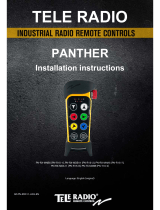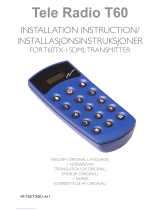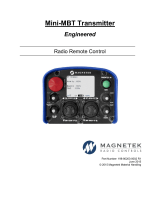211
ESFRDEEN DKNOSENL
CHANGING THE FREQUENCY
Programming/changing the frequency can only be carried out with the help of the transmitter.
Decide which channel/frequency you wish to transmit on by using the table below before you start program-
ming. The receiver automatically detects and changes to the new frequency.
FREQUENCY TABLE (69 CHANNELS)
CHANNEL FREQUENCY CHANNEL FREQUENCY
01 433,075 MHz 36 433,950 MHz
02 433,100 MHz 37 433,975 MHz
03 433,125 MHz 38 434,000 MHz
04 433,150 MHz 39 434,025 MHz
05 433,175 MHz 40 434,050 MHz
06 433,200 MHz 41 434,075 MHz
07 433,225 MHz 42 434,100 MHz
08 433,250 MHz 43 434,125 MHz
09 433,275 MHz 44 434,150 MHz
10 433,300 MHz 45 434,175 MHz
11 433,325 MHz 46 434,200 MHz
12 433,350 MHz 47 434,225 MHz
13 433,375 MHz 48 434,250 MHz
14 433,400 MHz 49 434,275 MHz
15 433,425 MHz 50 434,300 MHz
16 433,450 MHz 51 434,325 MHz
17 433,475 MHz 52 434,350 MHz
18 433,500 MHz 53 434,375 MHz
19 433,525 MHz 54 434,400 MHz
20 433,550 MHz 55 434,425 MHz
21 433,575 MHz 56 434,450 MHz
22 433,600 MHz 57 434,475 MHz
23 433,625 MHz 58 434,500 MHz
24 433,650 MHz 59 434,525 MHz
25 433,675 MHz 60 434,550 MHz
26 433,700 MHz 61 434,575 MHz
27 433,725 MHz 62 434,600 MHz
28 433,750 MHz 63 434,625 MHz
29 433,775 MHz 64 434,650 MHz
30 433,800 MHz 65 434,675 MHz
31 433,825 MHz 66 434,700 MHz
32 433,850 MHz 67 434,725 MHz
33 433,875 MHz 68 434,750 MHz
34 433,900 MHz 69 434,775 MHz
35 433,925 MHz





























